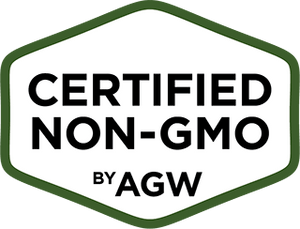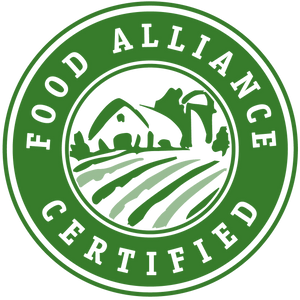- No products in the cart.
We swear—they’re good for you!
Diets aren’t about depriving yourself at all; don’t let anyone tell you otherwise. Instead, dieting is all about getting your food intake in order for your overall health. Newsflash: you can eat anything you want, just as long as you do it in moderation and accompany that with regular exercise and proper sleep.
Speaking of eating, one diet must-have is protein. This macronutrient does a lot for one’s body, from cell repair to fluid balance. If you lack protein intake, now’s the perfect time to address that.
Where does one get his or her protein fix? Well, for starters, you can find it in meat, seafood, poultry, legumes, and nuts. Do you know what else is a good protein source? Grains. Yes—you read that right.
You may be wondering, how on earth are grains rich in protein? Don’t let their size deceive you—they can pack a ton of this vital macronutrient in their compact spaces. If you want to go for lighter fare for your proteins, grains are a great choice to start with.
Want to stock up on those grains? Just look at this list before you hit the grocery stores. This way, you won’t get lost in aisles trying to find them.
1.Quinoa
You may know quinoa as a hot commodity among vegetarians and vegans. Did you know that quinoa’s popularity dates back to ancient civilizations? Judging by the way health nuts react to it, it’s safe to say that it hasn’t lost its charm at all. In fact, many cultures have it as a staple in their daily meals.
Here’s another bit of trivia for you: quinoa technically isn’t a grain; it’s actually a seed of a spinach-related plant. If you’ve always wondered why it tastes and feels light, now you’ve got your answer. While it’s already good as it is, it’s also great for salads. Toss it in with your greens for added protein and fiber!
2. Buckwheat
Does this grain sound familiar? You may have had it in your soba noodles. Buckwheat has a distinct taste that keeps people chewing: there’s just something about its blend of earthiness, nutiness, and bitterness that makes perfect sense for tastebuds.
Like quinoa, buckwheat is actually a seed. It’s just considered as such due to its preparation process. Despite its name, it’s 100% gluten-free! You don’t have to feel guilty about going for seconds when you’re having this for a meal. It’s best used in soups, salads, noodles, and pancakes.
3. Cahokia Rice
Another addition to this protein-rich list is Cahokia. This rice comes in brown and white variants, giving people options for their preferences. Unlike most rice types, its cooking time is shorter. Preparation is a lot less stressful as well since you won’t need a ton of heat and water to make the magic happen.
Cahokia rice is pretty versatile. You can mix it in salads and use it as the star of your rice dishes. You can even satisfy your sweet tooth and use it for desserts!
4. Couscous
This North African staple is a hit with many cultures. Couscous holds a special place in Italians’ hearts because they incorporate it into a ton of their dishes.
If you like sweet and nutty flavors, you’re going to enjoy couscous. It’s a great substitute for rice and pasta if you’re looking to cut down your carb intake. Couscous’s light and fluffy nature helps it absorb liquids and flavors, guaranteeing a gastronomical explosion in your mouth. Pair it with braises or stews for an extra delicious meal!
5. Oats
Oats are, arguably, one of the most popular and accessible grains known to man. If you’re a fan of oatmeals for breakfast, you already know just how good they can get.
There are many types of oats that exist, from steel cut to groats. Most people get the quick cooking variant due to their convenience. With today’s fast-paced lifestyle, who has the time for long preparations, right?
There’s a ton of things you can do with oats. Start your day right by having them in the morning! You can use it for baking healthy muffins if you don’t want a piping hot bowl for breakfast.
6. Millet
Are you in the mood for lighter grains? Millet may be the one to tickle your fancy. This grain’s mildness has a slight sweetness to it, which can earn the appeal of healthy taste buds and other curious cats. And the best part? It’s totally gluten-free.
Just like oats, millet is a versatile grain. You can substitute oats or rice for this if you want to try something new. Use it in stir fries, porridge, and breads to make them a little more healthier.
7. Wild Rice
Despite its name, you’ll be surprised to know that wild rice isn’t actually a rice type at all. In fact, it's water “grass.” This variant grows in wild lakes and rivers instead of the usual rice paddies.
If you want to know about how to use it, the good news is that you can pretty much use it like the way you’d use typical rice types. Just put this on a plate instead of white rice to accompany fish or meat. You can even add it to your burger mix for a healthier snack.
8. Amaranth
This not-so-grain is a complete protein; all 9 amino acids are packed in this Peruvian staple. Its manganese content helps metabolize protein, so don’t hesitate to use this grain from time to time.
A fun way to enjoy amaranth is to prepare it like you would popcorn. You’d be surprised at just how good it tastes.
9. Whole Wheat Pasta
Judging by its name, it’s safe to assume that this kind is healthier than the ones we buy in grocery stores. It’s just as delicious and appealing as its mainstream counterpart, so don’t let anybody dissuade you from trying it. You won’t regret it when you take a bite of it.
10. Cornmeal
Some call it polenta, while others say it’s grits. One thing’s clear, though: it’s quite the comforting grain. Use it to bake biscuits and bread if you want to strike a balance between healthy and hearty.
These are just some of the protein-rich grains that exist. What’s your favorite type out of all 10 selections?













